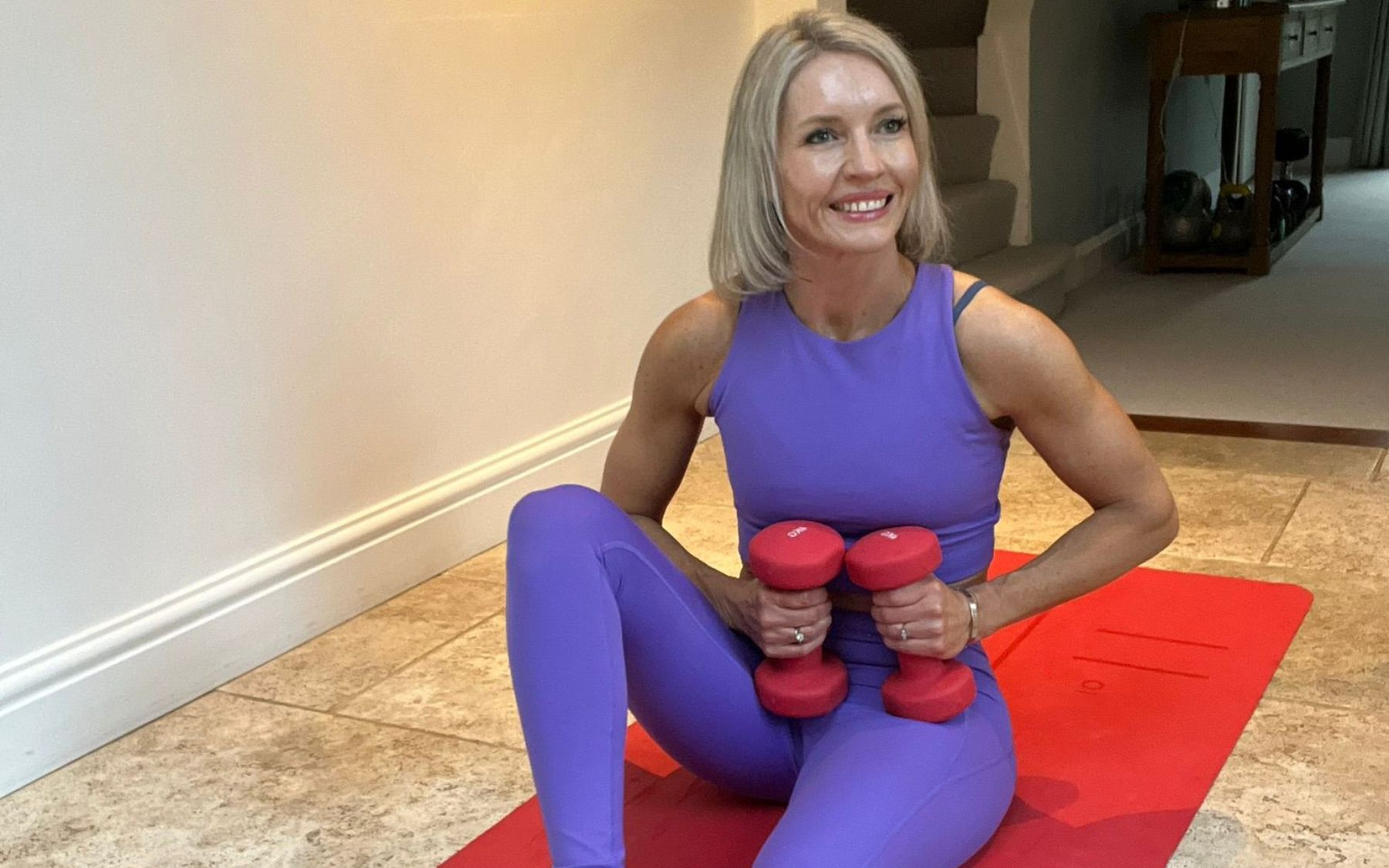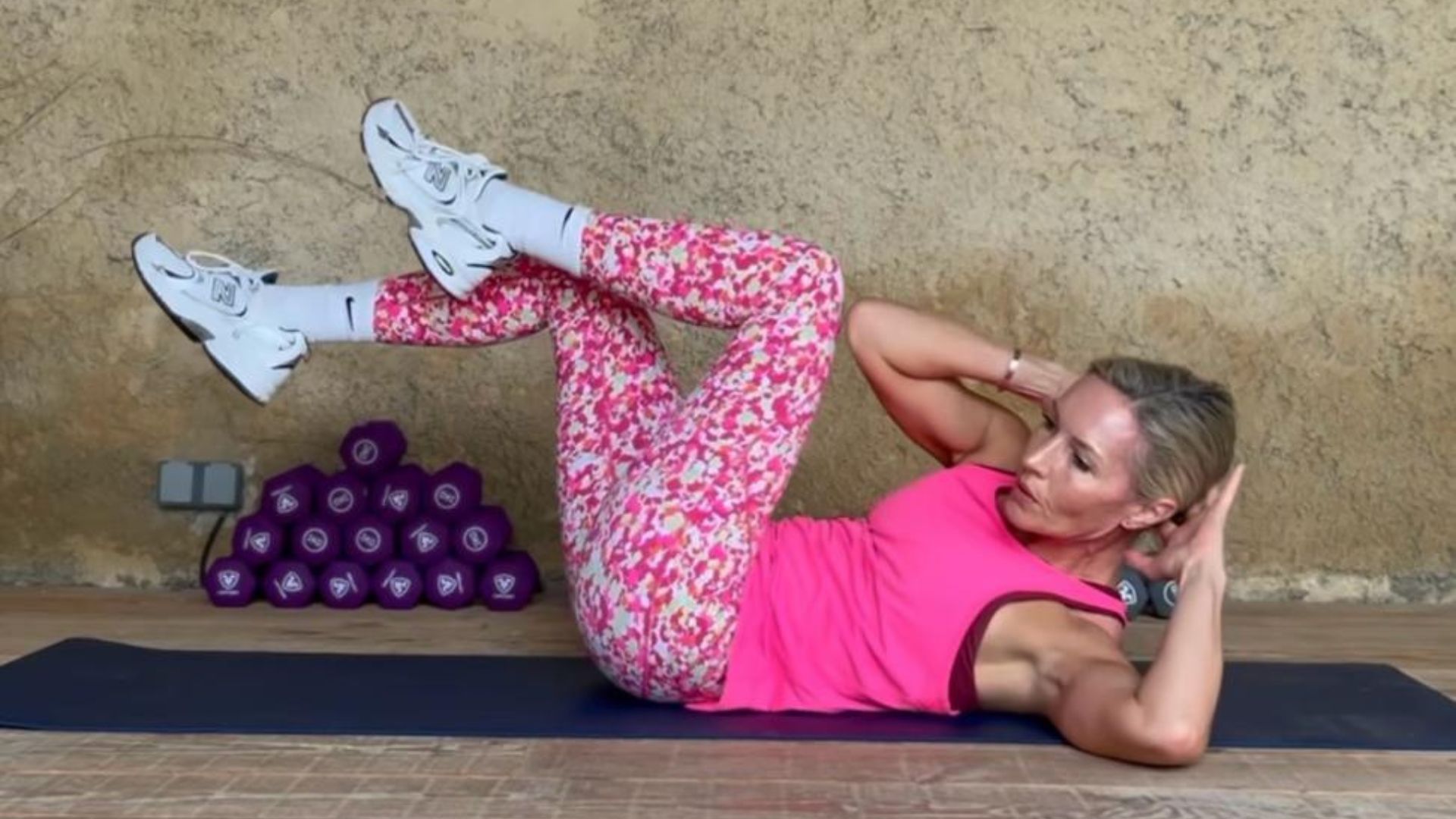Starting a new exercise programme as a beginner can be both exciting and challenging and often the hardest part can really be getting started.
Strength training can be a great way to build muscle, improve overall strength, support your bones and boost your metabolism amongst many other benefits. Here’s my step-by-step guide to help you begin strength training and I have included the perfect circuit too.
- Set Clear Goals: Define your goals for strength training. Whether you want to increase muscle mass, improve overall strength, or enhance specific aspects of your fitness, having clear goals will help guide your training programme.
- Learn the Basics: Familiarise yourself with basic strength training concepts, such as sets, repetitions and different types of exercises. Understanding these fundamentals will make it easier to follow a workout routine.
- Start with Bodyweight Exercises: If you’re new to strength training, begin with bodyweight exercises to build a foundation. Squats, lunges, push-ups and planks are excellent bodyweight exercises that engage multiple muscle groups.
- Understand Proper Form: Focus on learning and practising proper form for each exercise. Good form is crucial for preventing injuries and ensuring that you’re targeting the intended muscle groups. Remember a few good quality reps are much better than lots of reps with poor form.
- Include Compound Exercises: You will definitely hear me talk about these if you haven’t already! Compound exercises work multiple muscle groups simultaneously, providing efficient and effective workouts. Examples include squats, deadlifts, lunges.
- Progressive Overload: Gradually increase the resistance or intensity of your workouts over time. This principle of progressive overload is essential for continued strength gains. You can increase the weights and repetitions as you become stronger. The key is starting gently and building to avoid injury.
- Choose a Suitable Training Programme: There are various strength training programs available, ranging from full-body workouts to split routines focusing on specific muscle groups on different days. Choose a programme that aligns with your goals and fits your schedule so you can be consistent with it.
- Warm-Up and Cool Down: Always start your strength training sessions with a proper warm-up to prepare your muscles and joints for exercise – be sure to include dynamic stretches. After your workout, cool down with static stretches to improve flexibility and aid in recovery.
- Listen to Your Body: Pay attention to how your body responds to strength training. If you experience pain (other than normal muscle soreness), modify your routine and seek advice if necessary.
- Include Rest Days: Muscles need time to recover and grow stronger. Include rest days in your routine to allow your body to recuperate. Overtraining can lead to fatigue and increased risk of injury.
Remember that progress in strength training takes time, so be patient and stay committed. Celebrate your achievements along the way and don’t be afraid to adjust things as needed to keep it challenging and enjoyable.
Here’s a beginner workout for you to try – don’t forget to warm up and cool down.
- Squats – keep the weight in the heels, core engaged and chest lifted
- Bent over row – hinge at the hips. keep the back straight, core engaged and squeeze the shoulder blades together at the top of the row
- Shoulder press – keep the core switched on, engage your glutes and shoulders back, bring the elbows no lower than shoulder height and make sure you can see your arms in your peripheral vision as you press.
- Reverse lunge (alternate legs) – keep the shoulders back, chest lifted, drive through the heels as you step back to standing and watch the front knee doesn’t cave inwards. Only step back as low as feels comfortable for your knee/range of movement.
- Lateral raise – slight bend at the elbows, keep the chest and neck tall and long, core strong to stop the upper body swinging. Squeeze the glutes to support the lower back.
- Bicep curl – pin the elbow into the side and control the weights both up and down.
- Hammer curls – squeeze the tricep at the bottom, core strong and upper body still to avoid momentum in the movement.
- Straight leg or Romanian deadlift – keep the back straight and hinge from the hips, weight in the heels and glide the weight down the front of the legs. Only go down as far as the chest is parallel to the ground and don’t arch the back.
Try 10-15 reps of each exercise to get you started.
I have just launched a brand new beginner programme on the platform so if you’re ready to get started but not quite sure how, why not give it a go!
As always, any questions please do get in touch.
Caroline x









